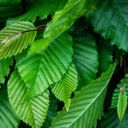



The hornbeam species are native to temperate regions of the Northern Hemisphere, mainly the Far East and China in particular. Only one of them is of North American origin: the American hornbeam. The common hornbeam carpinus betulus is one of only two hornbeam species originating in Europe, along with the oriental hornbeam.
charme.paragraph
The hornbeam is a fairly invasive species found only in the forests of Central and Western Europe up to an altitude of 1,000 metres. It is a shade or semi-shade species that does not fear the cold. Most of the time, it grows in coppice under high forest, particularly in association with oaks. Hornbeam needs warm summers for its seeds to mature. This species grows on fairly acidic to basic, dry and cool soils. It does not grow on soils that are too acidic or soggy. It has a short lifespan, rarely exceeding 150 years.
charme.paragraph3
A tree much cultivated by the Celts, the symbols of the Hornbeam are loyalty and spirituality. The tree got its name from the people who sat under its trunk and fell "under its spell". It is also the tree of hard work and conscientiousness. To avoid confusing it with the beech tree, which it closely resembles, learn this amusing little phrase: "Adam's charm is to be naked". The leaves of the hornbeam are toothed, while those of the beech are hairy.